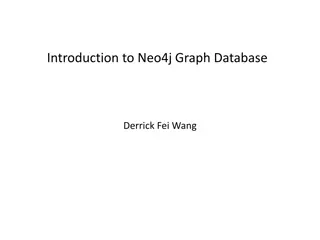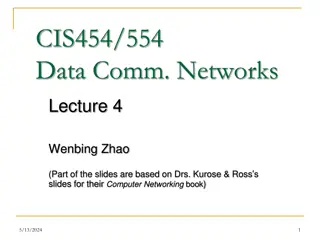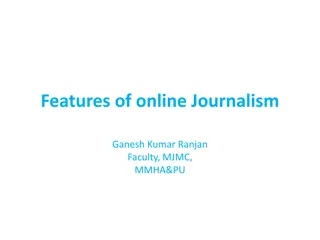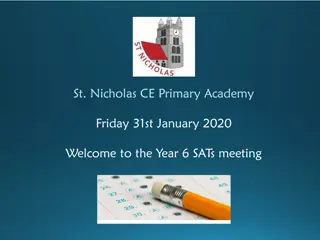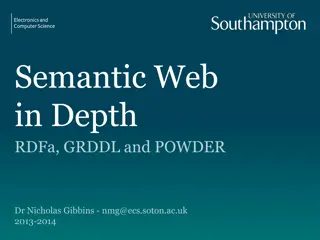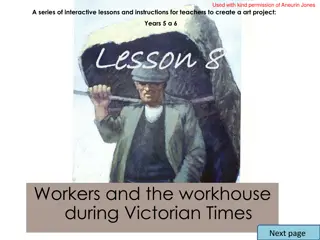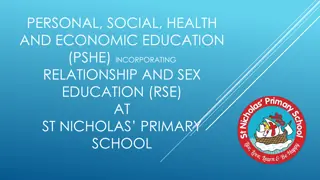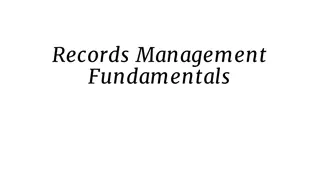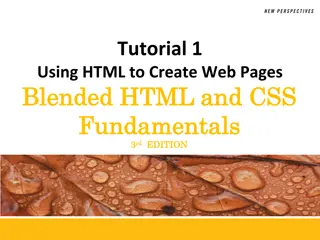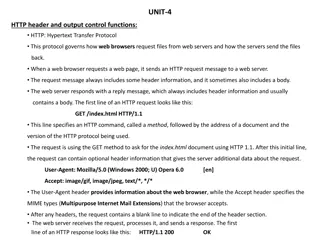Hypertext Fundamentals: A Comprehensive Overview by Dr. Nicholas Gibbins
Hypertext, as defined by pioneers like Ted Nelson and Mike Sendall, is a form of non-linear writing that allows for dynamic display and branching capabilities. This concept originated in the 1960s and has evolved to become a fundamental aspect of the World Wide Web. The interactive and associative nature of hypertext enables users to explore information through multiple pathways, creating a new way of accessing and manipulating data.
Uploaded on Sep 27, 2024 | 0 Views
Download Presentation

Please find below an Image/Link to download the presentation.
The content on the website is provided AS IS for your information and personal use only. It may not be sold, licensed, or shared on other websites without obtaining consent from the author. Download presentation by click this link. If you encounter any issues during the download, it is possible that the publisher has removed the file from their server.
E N D
Presentation Transcript
Hypertext Fundamentals COMP3220 Web Infrastructure COMP6218 Web Architecture Dr Nicholas Gibbins - nmg@ecs.soton.ac.uk 2017-2018
What is Hypertext? Nelson, T.H. (1965) A file structure for the complex, the changing and the indeterminate. Proceedings of the 20th ACM National Conference.. 4
What is Hypertext? [hypertext is] a combination of natural language text with the computer s capacity for branching, or dynamic display Nelson, T.H. (1967) "Getting it out of our system": Information Retrieval: A Critical Review, Schechter, G. (ed.). Washington, DC: Thompson Books. 5
What is Hypertext? By hypertext I mean non-sequential writing Nelson, T.H. (1974) Computer Lib/Dream Machines. Chicago, IL: Nelson, T.H. 6
What is Hypertext? vague, but exciting Mike Sendall 7
What is Hypertext? The reaction of the hypertext research community to the World Wide Web is like finding out that you have a fully grown child. And it s a delinquent. Nelson, T.H. (1997) After-dinner speech at Hypertext 97, Southampton, UK. 8
What is Hypertext? An application which uses associative relationships among information contained within multiple media data for the purpose of facilitating access to, and manipulation of, the information encapsulated by the data. Lowe, D and Hall, W. (1999) Hypermedia and the Web: An Engineering Approach. Chichester, UK: John Wiley. 9
What is Hypertext? Non-linear writing Interlinked texts Multiple pathways, multiple reading sequences Annotation and commentary Association of ideas Writing and reading not separated Interactive Not limited to text - hypermedia 10
Hypertext terminology
Nodes, Links, Anchors and Endpoints Lorem ipsum dolor sit amet, consectetur adipiscing elit. Nulla consequat tortor eget turpis scelerisque sit amet facilisis metus iaculis. Duis aliquam lacinia dictum. Morbi commodo bibendum ligula, et lobortis diam varius non. Morbi ac elit leo, ac semper nunc. 12
Nodes, Links, Anchors and Endpoints A node is a chunk of information that corresponds to a natural semantic unit -e.g. screen, page, frame -The act of chunking information is part of authoring process 13
Nodes, Links, Anchors and Endpoints A link is an association between nodes -Machine-supported fast inter-node connections 14
Nodes, Links, Anchors and Endpoints An anchor is the representation of a link on a node -e.g. buttons, bolded text, hotspots , images -the whole node might be an anchor but should be able to designate a sub-region as a source or destination of a link 15
Nodes, Links, Anchors and Endpoints An endpoint is a component of a link that references an anchor on a node 16
Links on the Web Links are part of the source node <a href= > Embedded links (c.f. first class links) Links can only be followed in the forward direction Links can only connect a pair of nodes Link anchors must be specified explicitly Links (usually) contain no additional information 17
Embedded Links endpoint Lorem ipsum dolor sit amet, consectetur adipiscing elit. Nulla consequat tortor eget turpis scelerisque sit amet facilisis metus iaculis. Duis aliquam lacinia dictum. Morbi commodo bibendum ligula, et lobortis diam varius non. Morbi ac elit leo, ac semper nunc. anchor link 18
Embedded Links in HTML endpoint <html> <head></head> <body> <p>Lorem ipsum dolor sit amet, <a href= http://www.example.org/ >consectetur</a> adipiscing elit. Nulla consequat tortor eget turpis scelerisque sit amet facilisis metus iaculis. Duis aliquam lacinia dictum.</p> </body> </html> anchor 19
Embedded vs. First class links Links are embedded in web pages To create a link from a web page, the web page must be edited Only the owner of a web page may create/edit links within it Separating links from nodes (first class links) allows richer linking: Multiple different link overlays (linkbases) Personalisation, task-orientation, etc 20
First Class Links Lorem ipsum dolor sit amet, consectetur adipiscing elit. Nulla consequat tortor eget turpis scelerisque sit amet facilisis metus iaculis. Duis aliquam lacinia dictum. anchor Morbi commodo bibendum ligula, et lobortis diam varius non. Morbi ac elit leo, ac semper nunc. link endpoints 21
Bidirectional Links On the Web, not easy to see what links to a page Links are embedded, so can only be followed from the source document to the destination, not the other way Can use a global index such as Google, but this raises issues of scalability With first class links: As easy to traverse links backwards as forwards Endpoints may be annotated as source/destination/bidirectional How do we find links that can be applied to a given document? 22
Bidirectional Links Lorem ipsum dolor sit amet, consectetur adipiscing elit. Nulla consequat tortor eget turpis scelerisque sit amet facilisis metus iaculis. Duis aliquam lacinia dictum. Morbi commodo bibendum ligula, et lobortis diam varius non. Morbi ac elit leo, ac semper nunc. 23
N-ary Links Web links connect only two documents together Only one href attribute allowed on an <a> tag First class links can connect many nodes together Many sources Many destinations Many of both 24
N-ary Links Lorem ipsum dolor sit amet, consectetur adipiscing elit. Nulla consequat tortor eget turpis scelerisque sit amet facilisis metus iaculis. Duis aliquam lacinia dictum. Morbi commodo bibendum ligula, et lobortis diam varius non. Morbi ac elit leo, ac semper nunc. Morbi commodo bibendum ligula, et lobortis diam varius non. Morbi ac elit leo, ac semper nunc. 25
Generic (functional, dynamic) links Web links have explicitly specified anchors Source anchor is the location in which the <a> is embedded Destination anchor is given by the fragment identifier on the URI reference: http://example.org/index.html#foo Richer location specifiers (locspecs) in endpoints Put a link on all occurrences of the word hypertext 26
Generic Links Lorem ipsum dolor sit amet, consectetur adipiscing elit. Nulla consequat tortor eget turpis scelerisque sit amet facilisis metus iaculis. Duis aliquam lacinia dictum. Morbi commodo bibendum ligula, et lobortis diam varius non. Morbi ac elit leo, ac semper nunc. sit 27
Functional Links Amet: Lorem ipsum dolor sit amet, consectetur adipiscing elit. Nulla consequat tortor eget turpis scelerisque sit amet facilisis metus iaculis. Duis aliquam lacinia dictum. Morbi commodo bibendum ligula, et lobortis diam varius non. Morbi ac elit leo, ac semper nunc. Iaculis: Morbi commodo bibendum ligula, et lobortis diam varius non. Morbi ac elit leo, ac semper nunc. $word dict($word) 28
Typed links Web links may contain some additional information <a href= rel= rev= > rel: the role of the relation from the source to the destination rev: the role of the relation from the destination to the source (the reverse relation) In practice, most Web authors don t use rel/rev In practice, most Web browsers ignore rel/rev Links are more than just navigation underlying associative relationship 29
Nodes, Links and Anchors Lorem ipsum dolor sit amet, consectetur adipiscing elit. Nulla consequat tortor eget turpis scelerisque sit amet facilisis metus iaculis. Duis aliquam lacinia dictum. Amet: Morbi commodo bibendum ligula, et lobortis diam varius non. Morbi ac elit leo, ac semper nunc. DEFINED-IN 30
Summary Hypertext is more than just the Web! The Web has a fairly impoverished approach to links: No first class links No bidirectional links No n-ary links No generic links No functional links Link types are present, but rarely used 32
Next Lecture: Architecture of the World Wide Web
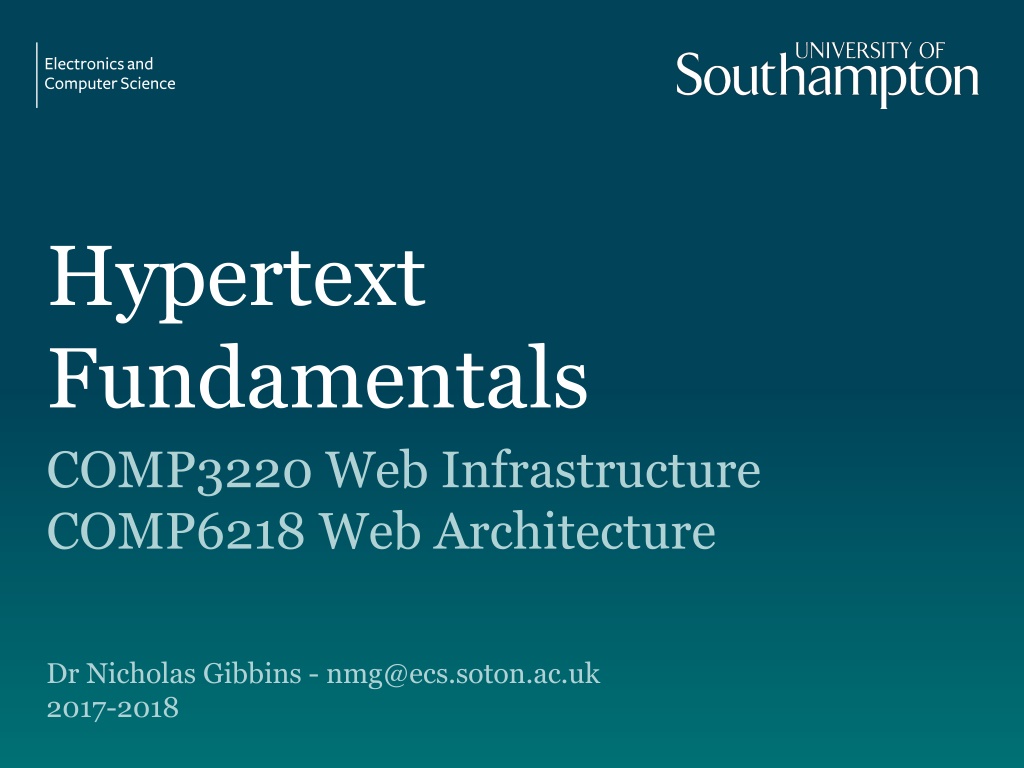
 undefined
undefined








